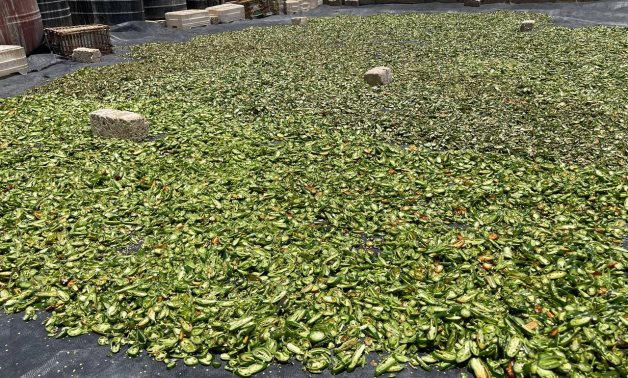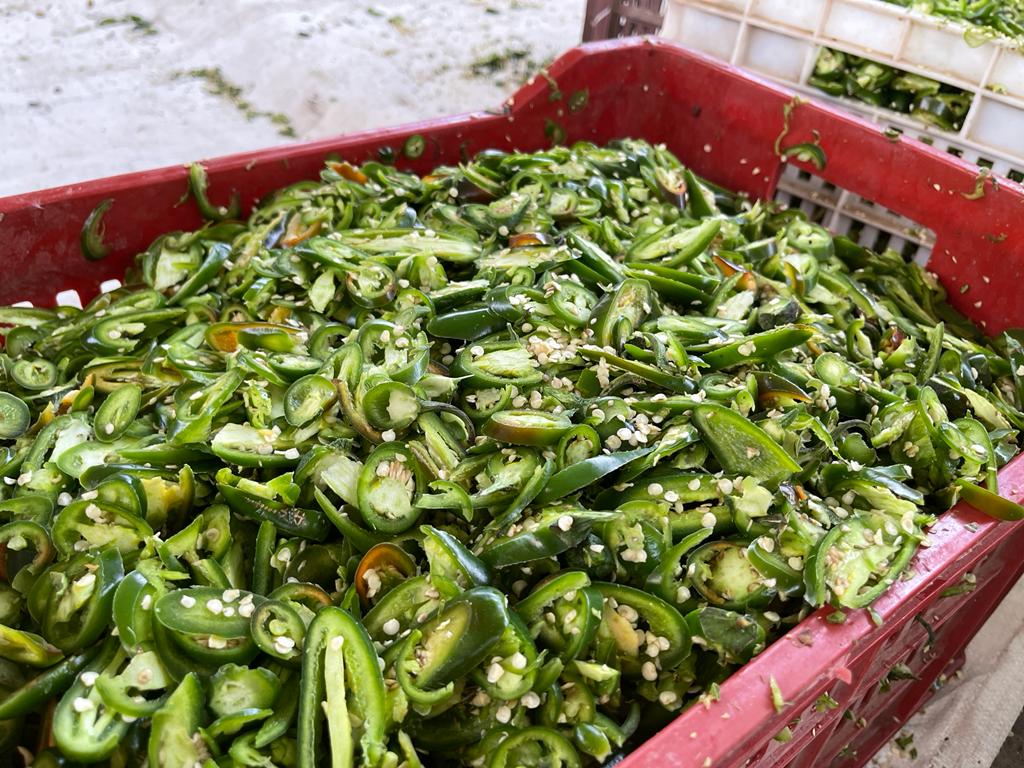
Jalapeno hot pepper dried in Egypt's Luxor for first time
CAIRO - 12 July 2022: For the first time, a station for sorting, plackaging and drying agricultural crops in Upper Egypt's governorate of Luxor is drying hot peppers of the Japapeno type in the sun, in preparation to be exported to Europe, the Arab World and Africa.
The station is called the Martyr Maged Saleh station, and it is located in Esna city in Luxor.
Engineer Abdel Karim Diab, responsible for the pepper drying project at the Martyr Majid Saleh station in Esna, says that for the first time this season they are working on drying jalapeno-type hot peppers, in order to open new markets for farmers as well as for workers.
He explained that contractual agriculture is dealt with at the beginning with the exporting company, then contracts with farmers on the required areas from the exporting company, and seedlings and inputs of pesticides and their use and agricultural fertilizers are provided to support farmers to produce peppers in the required shape.
Abdel Karim Diab added that they dry the hot pepper in the mountains of Esna, and then they plan for exporting it abroad, adding that this year they are targeting European, American and Arab markets such as the UAE, Kuwait and Saudi Arabia, and preparations are being made to enter African markets such as Kenya and South Africa.
He went on explaining that the product arrives from the farms and is sorted into 3 colors “red, green and wicker”, it is then cut on a machine equipped for cutting, and it is left in the sun for two days before being transferred to the hall to complete its drying period in the shade so that its color does not change. Drying methods are used to preserve the colors of the pepper.
Regarding the packaging at the end of the drying stages, the hot peppers are packed in special paper-wrapped plastic sacks, and the farmer’s code, station code, type of item, production date and date of packing are placed on them.


Comments
Leave a Comment